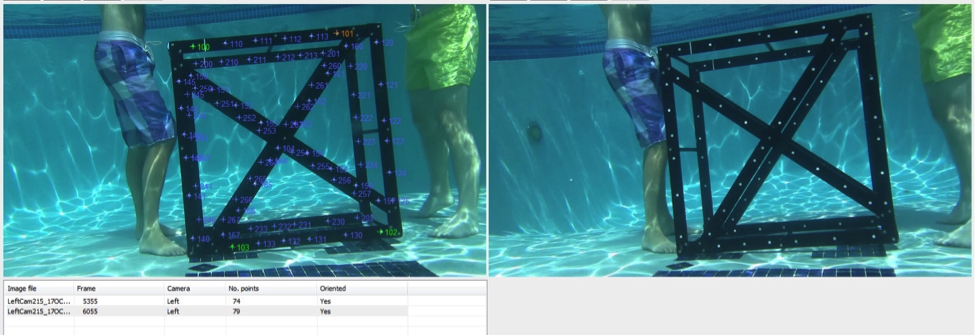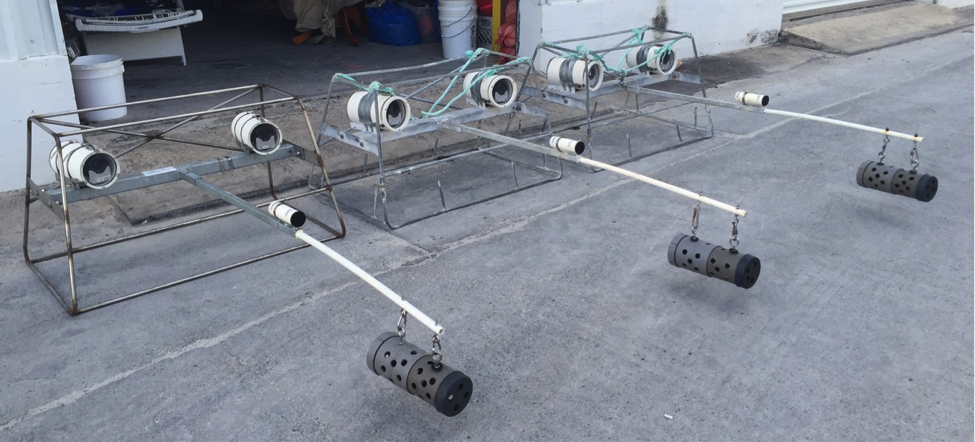
Recently, the BRUV studies by Wageningen Marine Research on the Saba Bank, Saba, St. Eustatius, and St. Maarten were concluded and the underwater cameras were transported to Curaçao. Here, Adrian Reid Navarro and Tom van Ee, two students of Van Hall Larenstein University of Applied Science, lead by project leader Martin de Graaf, will use the BRUVs to map shark populations around Curaçao. During this study, the underwater cameras will be taken to the sea with a boat from the CARMABI research station, where they will be lowered down to the bottom. The video’s that are obtained will later be reviewed for the presence of sharks. This sounds easier than it actually is, so I will give a short explanation of the different aspects of the BRUV research process.
Before even thinking of lowering the camera’s to the sea floor, a plan of action is drafted in which is determined the location of camera placement and the number of different locations. Environmental factors such as depth, the type of reef, and roughness of the sea are considered. On Curaçao, it was decided to leave out the North coast of the island because this side is constantly exposed to hard winds and high waves making it difficult to reach by boat. It is also important to predetermine what the bottom looks like where you drop the camera and how long a rope is necessary to hold on to the BRUV. The reef around the islands drops quickly from 10-15 meters to 60 meters in depth and before you know it, the rope will be too short.
After writing the plan of action, the camera systems need to be calibrated. This calibration ensures a proper measurement of the length of animals caught on film. A metal cube equipped with reflecting dots separated by a set distance are held in front of the cameras in different positions, simulating different body positions and sizes of fish swimming by the camera. This is done in a clear swimming pool on a sunny day. With these simulation data, a data file is created that enabled subsequent analysis of actual fish lengths.

After successful calibration of the cameras, it is time to collect fish that can be used as bait to lure sharks to the camera. Local fishermen are asked for fish they have no use for, mostly these are the heads and tails. Then, as soon as there is a captain available and appropriate weather conditions, the boat can go out for research. On the predetermined locations, the BRUVS are lowered to the bottom and kept there for an hour before being hauled back up. This is a physically intensive process because the BRUV frame weighs over 20 kg and it is pulled up from great depth manually. When the camera systems are back on the boat, the memory cards and batteries of the cameras are replaced, and this entire process is repeated up to four times. After a long day at sea, the footage from the camera is transferred onto a computer, the memory cards are emptied and all the batteries are recharged. The days on which the weather conditions are not optimal to go out are reserved for data analysis, watching the footage in search of sharks and rays swimming by.
Thus far, 15 videos were recorded on the West side of the island in the shallow parts and the BRUVs were passed by many types of fish, several rays, and some turtles. It is expected that sharks will also be spotted as soon as the cameras are deployed in deeper locations. The North and South sides of the island are still planned; divers regularly sight sharks here even in the shallower parts.

Door Twan Stoffers





